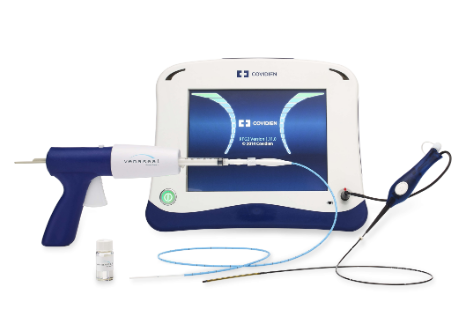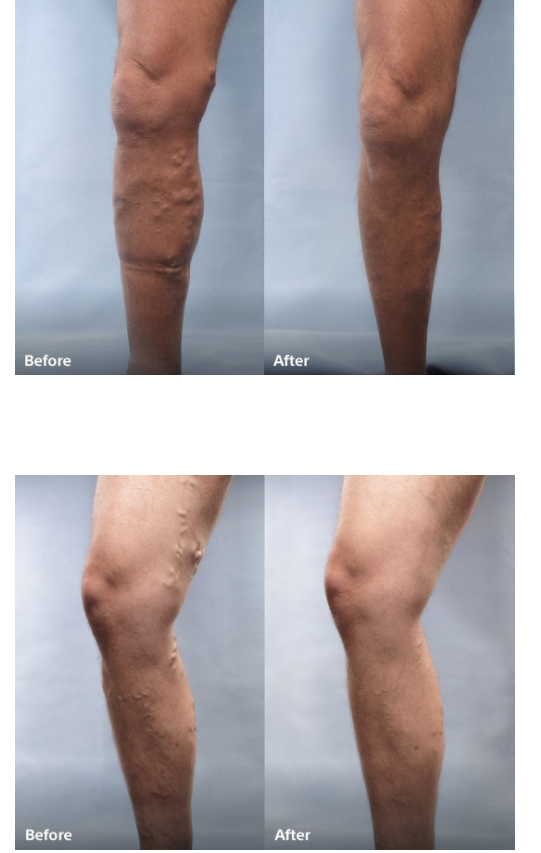
Leading the Way in Vascular Excellence.
Varithena

About
Varicose vein treatment involves injecting a microfoam that causes veins to close. Varithena is minimally invasive, and patients reporting pain at the injection or application site in clinical trials was 4.0%.1 There’s no need for incisions or stitches, and treatment is usually less than an hour. Most people only need a single treatment to see results.
Before the procedure
The physician usually numbs the injection site, but no additional anesthesia is required.
During the procedure
Your doctor will discuss the procedure with you. Here is a brief summary of what to expect:
- Your physician administers a small amount of Varithena.
- The Varithena microfoam fills the desired section of the vein and treats the vein wall, causing the diseased vein to collapse.
- Blood flow is redirected to healthier nearby veins. The microfoam disperses as it comes into contact with blood in healthy veins.
- Your physician uses the same process on any other veins that need treatment.
- The most common side effects are leg pain or discomfort, injection site bruising or pain, and potentially serious blood clots in the leg veins.
After the procedure
- While allergic reactions are rare, a healthcare professional will watch you for signs of an allergic reaction for at least 10 minutes.
- Your physician applies bandages and compression stockings to your leg. You’ll wear the stockings for two weeks.
- Because Varithena is minimally invasive and well tolerated by most people, you’re likely to go back to most normal activities the same day.
- You should avoid heavy exercise for one week.
- For a month, you should walk at least 10 minutes a day and avoid long stretches of inactivity.
- Additional treatment sessions may be needed.
Patient results: before and after

